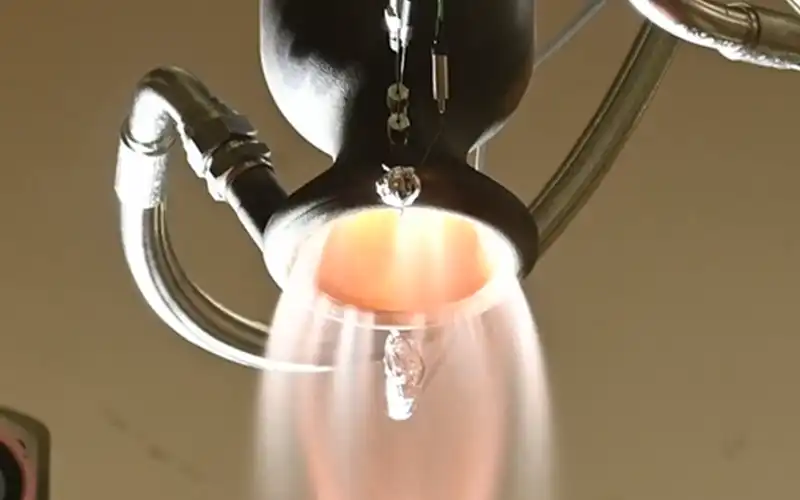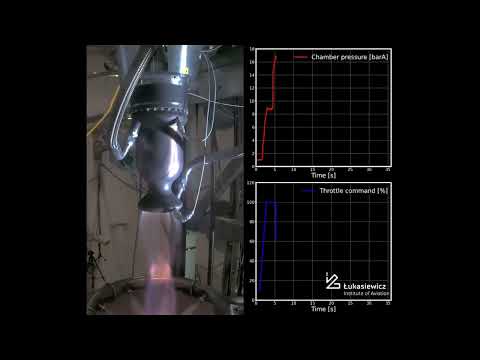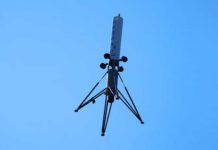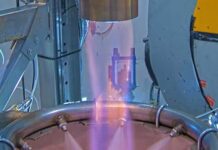
The Łukasiewicz Research Network’s Institute of Aviation has successfully completed its second hot-fire test campaign for the Throttleable Liquid Propulsion Demonstrator rocket engine.
Development of the Throttleable Liquid Propulsion Demonstrator (TLPD) is led by a consortium of Polish companies under ESA’s Future Launchers Preparatory Programme. The engine uses high-test peroxide and ethanol and is capable of producing 5 kN of thrust.
An initial Phase A test campaign was completed by August 2024 and featured an early, passively cooled prototype of the engine’s combustion chamber. The testing focused on short-duration firings at various fixed power levels to validate the engine’s ability to generate stable thrust.
In November 2024, the team conducted the second test campaign using a new combustion chamber produced with additive manufacturing techniques. This upgraded combustion chamber featured active water cooling, enabling longer-duration test firings. A total of 14 hot-fire tests were completed, each lasting up to a minute. During each test, the thrust was adjusted multiple times, reaching as high as 110% and as low as 10% of its nominal operating level.
What’s next?
The next phase of the engine’s development will involve upgrading it to a “flight-like” engine. According to a 25 February ESA update, this phase of the project has a budget of €5 million and will last two years. In addition to the current consortium, which includes the Łukasiewicz Research Network’s Institute of Aviation, Astronika, and Jakusz SpaceTech, the second phase of the engine’s development will include Łukasiewicz spin-off company Thaliana Space. The company will collaborate with potential customers to integrate their specific needs into the engine’s design.
Once completed, the upgraded variant of the Throttleable Liquid Propulsion Demonstrator engine will be designed for integration into a lander for Moon or Mars missions or for spacecraft focused on space debris removal or in-orbit servicing.





